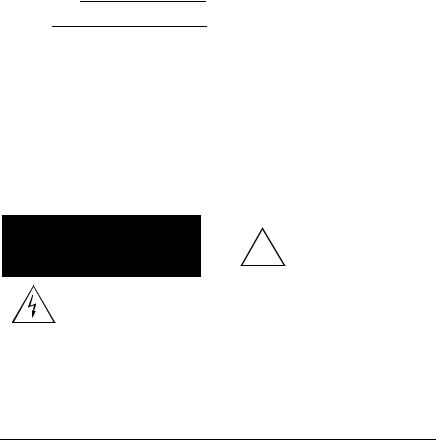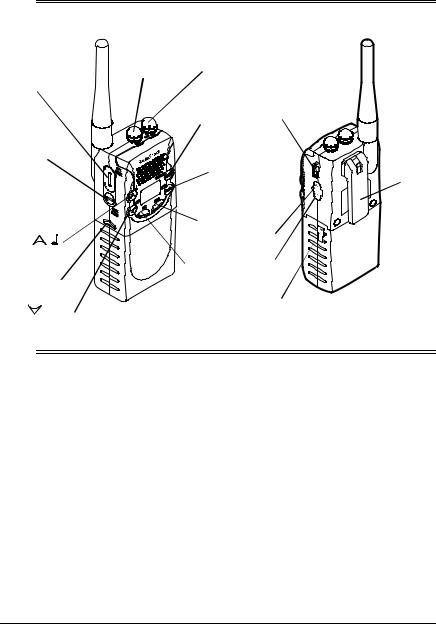RadioShack 19-903 Owner Manual

5W 15 Channel 2-Way GMRS Radio
OWNER’S MANUAL — Please read before using this equipment.
Your RadioShack 5W Compact GMRS Handheld Transceiver is a portable, two-way, General Mobile Radio Service (GMRS) transceiver that you can carry almost anywhere. It meets commercial-grade standards for clear and reliable communication. The transceiver has fifteen operation channels — seven GMRS channels, one emergency channel, seven interstitial channels, and ten weather channels with alert.
38 Quiet-Tone CTCSS (Continuous Tone Control Squelch System) — helps reduce interference from other
Splash Proof (JIS Level 4) — offers water resistance.
FCC INFORMATION
FCC License Required
Warning: There is a penalty for any unlicensed operation of a GMRS radio.
The Federal Communications Commission (FCC) requires you to have a GMRS license before you operate this transceiver. To obtain a license, you must be at least 18 years of age, and cannot be a representative of a foreign government.
systems in the area operating on the same frequency.
Built-in Modulation Limiter Circuit
— automatically adjusts for a wide range of voice levels to ensure an effective transmission.
High/Low Power — saves power by choosing a suitable transmitting power for different ranges.
Flexible Antenna with BNC Connector — provides excellent reception and is easy to attach and remove, so you can use an external antenna to extend the range and performance.
You must complete FCC Forms 605 and 159 (Fee Remittance Advice) and return them with the applicable fees and Payment/ Fee Type Code (PAZR) to the FCC. To obtain the necessary forms, contact the FCC at:
Federal Communications Commission
Wireless Bureau Applications
P.O. Box 358130
Pittsburgh, PA 15251-5130
1-888-CALLFCC (1-888-225-5322)
To obtain instructions on filing form 605 electronically, go to http://www.fcc.gov.wtb/ uls.
This radio is intended for communications from base-to-mobile or mobile-to-mobile stations. Base-to-base communication is not permitted.
©2001 RadioShack Corporation. All Rights Reserved. RadioShack and RadioShack.com are trademarks
used by RadioShack Corporation.

When you receive your license from the FCC, you are assigned a call sign. You must give your call sign at the end of every communication exchange or once every 15 minutes during a continuous communication.
We recommend you record the radio’s serial number and your call sign in the space provided, and keep this manual and a copy of your GMRS license with your important records. The serial number is on the transceiver’s back panel.
Serial Number
Call Sign
The Personal Radio Steering Group (PRSG) is the national user-advocacy organization for the GMRS. The PRSG provides assistance with licensing and other information about the GMRS, including how to contact and communicate with other GMRS licensees.
Personal Radio Steering Group
P.O. Box 2851
Ann Arbor, MI. 48106
www.provide.net/~prsg/
SAFETY TRAINING INFORMATION
|
Your RadioShack radio |
|
generates RF |
|
electromagnetic energy |
WARNING |
during transmit mode. |
|
This radio is designed for |
and classified as “ Occupational Use Only”, meaning it must be used only during the course of employment by individuals aware of the hazards, and the ways to minimize such hazards. This radio is NOT intended for use by the
“General Population” in an uncontrolled environment.
This radio has been tested and complies with the FCC RF exposure limits for “Occupational Use Only.” In addition, your RadioShack radio complies with the following Standards and Guidelines with regard to RF energy and electromagnetic energy levels and evaluation of such levels for exposure to humans:
•FCC OET Bulletin 65 Edition 01-01 Supplement C, Evaluating Compliance with FCC Guidelines for Human Exposure to Radio Frequency Electromagnetic Fields.
•American National Standards Institute (ANSI) (C95.1—1992), IEEE Standard for Safety Levels with Respect to Human Exposure to Radio Frequency Electromagnetic Fields, 3 kHz to 300 GHz.
•American National Standards Institute (C95.3—1999), IEEE Recommended Practice for the Measurements of Potentially Hazardous Electromagnetic Fields — RF and Microwave.
To ensure that your exposure to RF
! electromagnetic energy is CAUTION within the FCC allowable
limits for occupational use, always adhere to the following guidelines:
DO NOT operate the radio without a proper antenna attached, as this may damage the radio and may also cause you to exceed FCC RF exposure limits. A proper antenna is the antenna supplied with the radio by the manufacturer or an antenna specifically
2

authorized by the manufacturer for use with this radio.
DO NOT transmit for more than 50% of total radio use time (“50% duty cycle”). Transmitting more than 50% of the time can cause FCC RF exposure compliance requirements to be exceeded. The radio is transmitting when 7; appears on the LCD.
ALWAYS keep the antenna at least 1cm (1/2 inch) away from the body when transmitting and only use the belt-clip supplied with your radio when attaching the radio to your belt, etc., to ensure FCC RF exposure compliance requirements are not exceeded. To provide the recipients of your transmission the best sound quality, hold the antenna at least 2.5 cm (1 inch) from your mouth.
USE ONLY RadioShack authorized accessories (speaker/microphones, handstraps, etc.) with your radio. Use of unauthorized accessories can cause the FCC RF exposure compliance requirements to be exceeded.
The information listed above provides the user with the information needed to make him or her aware of RF exposure, and what to do to assure that this radio operates within the FCC RF exposure limits of the radio.
ELECTROMAGNETIC INTERFERENCE/COMPATIBILITY
During transmissions, your RadioShack radio generates RF energy that can possibly cause interference with other devices or systems. To avoid such interference, turn off the radio in areas where signs are posted to do so. DO NOT operate the transmitter in areas sensitive to electromagnetic radiation,
such as hospitals, aircraft, and blasting sites.
IMPORTANT CAUTIONS:
•NEVER hold the transceiver so that the antenna is very close to, or touching exposed parts of the body while transmitting. The transceiver will perform best if the microphone is 2.5– 5 cm (1 to 2 inches) away from the mouth and the transceiver is vertical.
•If you wear the radio on your body, ensure that the antenna is at least 1 centimeter (1/2 inch) from your body when transmitting.
•DO NOT push the PTT when not actually desiring to transmit.
3

ˆ A Quick Look at Your Radio
|
|
VOL/ |
|
PTT/ |
SQL |
OFF |
|
|
|
|
|
LOCK |
|
|
|
|
Q-SCAN/ |
Handstrap |
|
|
QUIET |
Hole |
|
|
|
||
MON/ |
|
APO/ |
|
FUNC |
|
Belt |
|
|
|
HI/LO |
|
|
|
Clip |
|
|
|
|
|
|
DUAL |
|
|
/ |
|
|
SPK |
|
|
|
|
Battery |
WX |
|
MIC |
|
|
|
|
Release |
|
|
|
CHRG
/SKIP
ˆ Preparation
CHARGING THE
BATTERY PACK
Your transceiver comes with a 8.4V, 1300mAH NiMH battery pack for power. Before you use the battery pack for the first time, you must use the supplied battery charger to charge it for about 14–16 hours. Once it is fully charged, the battery pack provides power to your transceiver for about 11 hours when you set the transmission power to low, and about 5 hours when you set the power to high.
You cannot use the transceiver while you charge the battery pack.
Caution: The supplied battery charger was designed specifically for your transceiver. Use only the supplied battery charger.
1.If necessary, turn OFF/VOL to OFF.
2.Pull out the rubber CHRG cover on the side of the transceiver and insert the charger’s barrel plug into the jack. Then plug the other
4
